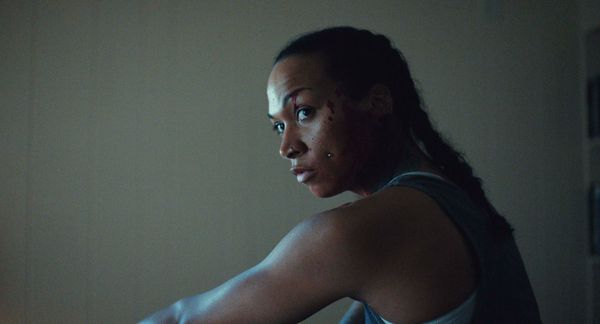 |
| Kali Reis in Catch The Fair One Photo: courtesy of IFC Films. An IFC Films release. |
Kaylee (Kali Mequinonoag Reis) is a boxer. She’s also the sister of a missing girl, and as a mixed indigenous woman, she knows all too well that that disappearance is unlikely to be properly investigated unless she can do it herself. A blend of mystery, revenge thriller and social issue drama directed by Josef Kubota Wladyka, Catch The Fair One has enjoyed a lot of positive critical attention, not least in relation to Kali’s performance, which has now won her an Independent Spirit nomination. The current WBA Super lightweight champion, and a dedicated champion of indigenous women and girls, Kali was also instrumental in developing the story and ensuring the authenticity of the characters and situations it depicts. When we meet to discuss the film, I ask her how that came about.
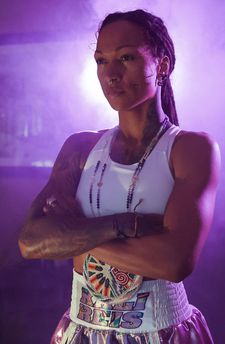 |
| Kali Reis Photo: courtesy of IFC Films. An IFC Films release. |
“Josef originally just reached out to me back in 2017, with pretty much a bare bones script of an idea that he wanted to tell a story around missing and murdered indigenous women,” she says. “And also, he ran across my Instagram profile from another mutual friend that owns a boxing gym, and he was just getting into boxing. Anyway, he found me and realised that I use my boxing platform to bring awareness to different Native American indigenous issues such as missing and murdered indigenous women. So he initially reached out to me and told me who he was and this idea that he had, and asked if I'd ever be interested in acting in it.
“Initially, just being an artist, from when I was a kid, painting, music and coming from a real artistic background, I wanted to get into acting. I just didn’t know how. So very early on, just the initial context of the story that he wanted to tell and the self awareness that he had that it was a story to tell, but not his story to tell, he was really adamant about telling it the right way, and getting my personal perspective, as well as the perspective of the entire community on this issue, was just, you know, it made sense right from the start. I have a great friendship and Joseph now, through this whole almost five year journey, and really early on, he wanted me to be a collaborative, creative partner in just developing my character, the characters in the story, the themes that we wanted to make sure we got in the film and, and really putting all these these feelings on this main character.
“It was more or less a two year developmental process with a bunch of different versions of the script. I don't personally know how to physically write the script, but we’d go over scenes and he asked my input and we you know, fast forward to now. It was really a blessing to be able to have my first go around with acting, to be able to be part of that creative process.”
One of the reasons why Catch The Fair One is so important is that there are very few films about Native women to begin with, and then really hardly any in which they have any agency. Obviously, bringing boxing into it makes Kaylee a dynamic character to begin with, but how did Kali take it from there to make sure that her character was able to drive the narrative the way she does?
“Yeah, absolutely. I mean, um, you know, Joseph had the pleasure of accompanying to me to my boxing gym, so I know the boxing aspect of the story was definitely his idea. And as well as that, he took a lot of personal aspects of my real life and wanted to include them in this character, the more and more he got to know me and know my story. So you know, down to even the colours and the location, he just wanted to really make sure that the audience felt that sense of loss, a sense of rage, anger and guilt that this character has throughout the entire film, I mean, the character’s in almost every frame in the movie so it was really something that was on her back, and really understanding that and the physicality of this character was most important, not the fact that she was a powerful boxer, just that this physically powerful person was broken after her sister was lost and we really wanted to get that sense of loss, of consciousness, that memory in the entire film and really feel, not hear, what she's saying. To feel what she's feeling throughout the entire film, kind of like a common feeling that the entire community feels when our sisters, when people go missing,”
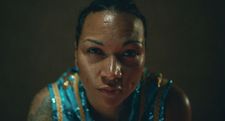 |
| "This is something I know first hand. I am Kali, the mixed indigenous, two-spirit boxer." Photo: courtesy of IFC Films. An IFC Films release. |
Usually that kind of revenge action drama focuses on somebody who is very strong all the way through physically and never really gets damaged or injured, whereas this character is someone who is suffering all the way through physically as well as mentally. How did she approach playing that?
“You know, her name is Kaylee, it was spelled differently. When I was playing that character, even though it’s the same name, it was just completely different, and there was different characteristics about her hunch over, just how she carried herself, you know? That is a bit of a part of me, especially being the mixed indigenous woman that I am. But I wanted people to see and feel it, like even in just her eyes, and how she's just so sad. And I just started doing small things for myself as a performer, to lock and dial in on this character, whether it was the way she twists or how she played with the elastic on her band, knowing that she used to use drugs, and I really honed in on those characteristics, and then also plugged out because it was so close to home, I believe, to stay grounded in the character when I could and completely take myself out of it. Because it was such a cathartic process as well. Because this is something I know first hand. I am Kali, the mixed indigenous, two-spirit boxer.”
There’s one very difficult scene where she has to win the trust of a pimp, who is taking a look at her for the first time. It strikes a fine balance, exploring exploitation without being exploitative in itself. I ask if it was difficult to shoot, but she’s sanguine about that, saying that she thinks it was actually more uncomfortable for the other actor in the scene.
“There was no need to waste two minutes of film on the sexual aspect of what we very well know,” she says, explaining why it stops when it does. “So it was one of those things where out of respect, and just the kind of hint, don't show, but kind of just hint towards the fact that we know what's going on. And we didn't want to sexualise this crime like that. So it's really important to highlight the more important things and suggest it, but to kind of stand on that fine line of ‘Is it dark enough? Is it too dark? Is it not dark at all?’ But you know, it was really important, especially to Joseph, being very sad and hypersensitive to the fact that we were talking about young girls and young women, there was no need to film something that we already know, happens.”
 |
| "I just dove headfirst into it" Photo: courtesy of IFC Films. An IFC Films release. |
The statistic on missing and murdered indigenous women and girls are shocking, yet it’s a subject which has barely been touched on in cinema. I ask if that placed an extra weight of responsibility on her to get the story right.
“Absolutely. I mean, like I said, I do my best to use my boxing platform to talk on numerous issues such as missing and murdered indigenous women, and I'm also a youth advocate, and then a residential counsellor for young girls, ages 11 to about 24, for a while now. And my approach with that personal work is just to be relatable. And it's unfortunate that it hasn't been – not even filmed, but in the mainstream media, you will not hear anything about missing and murdered indigenous women unless you're looking for it. But when a white lady goes missing, and not taking anything away from her and her family, when she goes missing in America, you see it on every news station, every newspaper, every everything. And, you know, we're the first people of this land, but always the last to be talked about or cared about.
“I felt a huge responsibility, but not a burden, more of an honourable responsibility to take this on, as one individual to have a voice for the voiceless and fight for those who can't fight. The same reason I fight in the ring is the same reason why I want to tell this story, and encourage more of our people to tell our stories, we need to tell our stories from our perspective. And, you know, I just dove headfirst into it and it's going to hit people how it's going to, you know, everybody has a different experience watching it. But the main key is to bring up those questions and just educate, bring awareness and try to motivate some change.”
When one is involved in any sport, there's a lot of discipline, there's a lot of learning how to control oneself and how to expend the resources that one has. Did that help with the very physical nature of a lot of the scenes that she was in, and just the sheer amount of work that she was doing day after day to shoot the film?
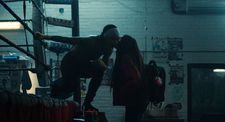 |
| "I absolutely took my discipline from boxing and carried it right through into the acting" Photo: courtesy of IFC Films. An IFC Films release. |
“Yeah, absolutely. I mean, I'm very self aware of the physicality and the presence I have as a physical athlete. And it did absolutely help with the boxing aspect of it, the physical running through the woods and all that craziness. I mean, that, to me, was fun, because I'm a very physical person. And it was interesting to be learning behind the scenes about the coordination and how things work with frames and just the different technical terms. But the discipline I have was being a professional fighter for 13 and a half years, and being involved in something so demanding as boxing for over 20 years as a young teen. It's not a team sport, whereas if I'm not feeling good I can't sub in if I have to shoot the 18 hour day, I have to stay present in the moment. So there’s that discipline I have and maybe also I’m too clearly critical of my own work, being a Virgo, always wanting to get the best out of myself. Sometimes it's a double edged sword, but I absolutely took my discipline from boxing and carried it right through into the acting.”
We talk about the film’s rather abrupt ending, which has rattled some critics, and I say that to me it seemed that it was about trying to speak to the truth of these stories, rather than trying to follow a Hollywood convention.
“You absolutely hit the nail on the head.” she says. “I mean, me and Joseph agree that it had to be unpredictable, but inevitable. And with this situation, in this issue, there's barely any happy endings. They’re few and far between, and the reality of the situation, it's real, it does happen, and it's more than nine times out of ten not a happy ending, but it's reality that families and even the survivors have to live with day in, day out. So it was definitely a choice that we made. It's one of those things where when you do watch it, you might not like it but you can accept and be like, ‘I get it.’ That's what we wanted.”
The way she talks about acting, she seems very keen on doing more of it...
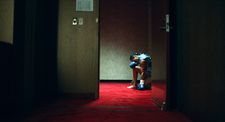 |
| "This physically powerful person was broken after her sister was lost" Photo: courtesy of IFC Films. An IFC Films release. |
“Absolutely. I mean, obviously, I would love to continue telling stories that we need to tell, but also just be, because I'm such a relatable face being indigenous, in the business. You don't see a lot of Native American indigenous people in film, not playing a typical Native American role. You're seeing a little bit more of them, we're getting jobs because we’re good at them, but just to be a familiar face to the community, especially the Northeast woodland people that barely get mentioned in anything that has to do with Native Americans, to be a representation of a person who's living today that knows what they're from, has their ancestry, is not some indigenous Native American of the past, is not playing somebody who's a slave of the white man in a typical western – and to be in a role because I'm just talented and an actor that wants to just be represented in Hollywood, and whatever, wherever this journey brings me. I just want to be that representation to that one kid that maybe is scared to take that leap of faith because it's unfamiliar territory, but just go for it.”
And so finally, how does she feel about the Independent Spirits?
“I was very shocked,” she says, suddenly looking a bit overwhelmed at the thought of it. “I'm honoured. And I'm told this doesn't really happen like that. I mean, to be in something that's so prestigious on my first time around. You know, I put my blood, sweat and tears in this – myself and Josef – and it's just an honour even to be mentioned. I mean, I’m getting to experience a lot of things first hand that normally people who first get into this industry don't, so I'm just taking it all in.”
Catch The Fair One is is US cinemas and available across numerous rental platforms from Friday 11 February.





















